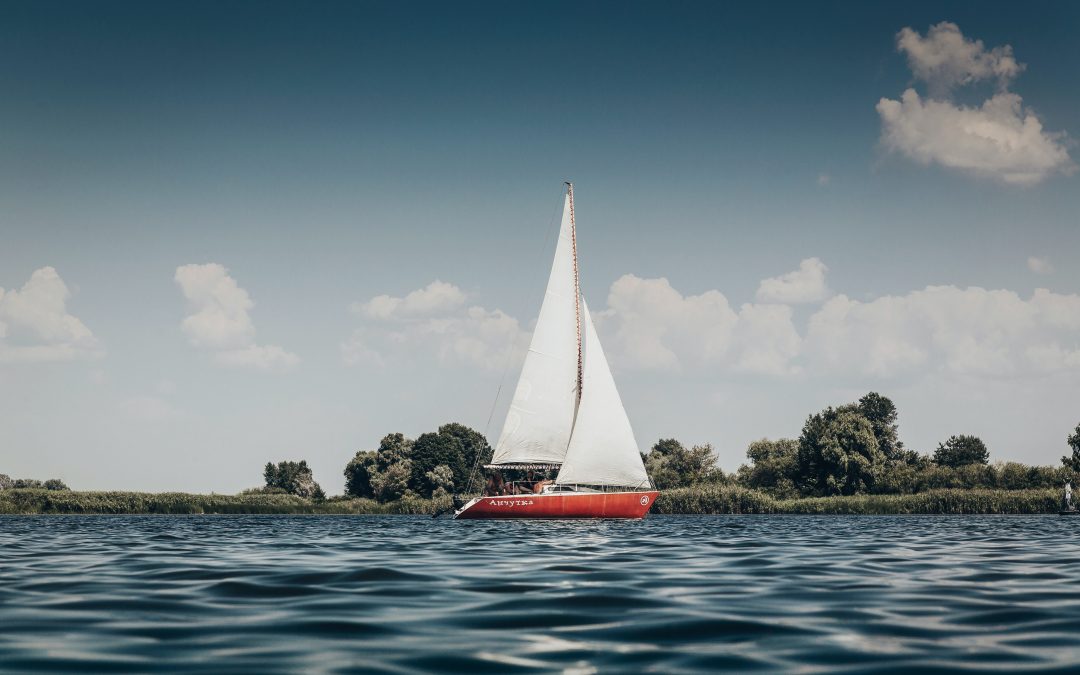In the highly competitive world of marine boat architecture, the simulator is fast becoming an essential, if not a strategic tool. “Dynamic voltage simulation simulations are playing an increasingly important role in design. Simulators are now standard and you cannot work on offshore competition projects without simulation,” said Xavier Guisnel of VPLP’s engineering department. “Even speed predictions are now of secondary importance compared to a simulator.”
An ingenious tool
The market is currently dominated by simulator Gomboc, developed by Swiss engineer and Emirates Team New Zealand member Jean-Claude Monnin. VPLP has acquired a license and also uses software developed by Artemis Racing. “The problem with such tools is that they are always locked when you rent them,” says Vincent Lauriot-Prevost. “There is a risk that our company, like ours, will be dependent on suppliers,” adds Xavier Guisnel.
That’s why VPLP has invested in its own simulator for the past three years. As Vincent Lauriot-Prévost said, the goal is to “manage the development of our instrument that meets our goal.” This development task was handed over to Paul Kerdraon, who joined the company with the express intention of working on the project. He is a graduate of a polytechnic and is defending a dissertation on the subject as part of a state-funded program in collaboration with the École Centrale Nantes. “The existing simulators are designed primarily for the America’s Cup, which will be held on a flat sea. We need to consider the effects of swelling in the stress analysis so we can model the vessel’s sea capacity.”
This ingenious tool, whose models have been validated through months of tank testing, is used not only to build but also to tune boats before they go into the water, saving a lot of time upstream. “The idea is to deliver a digital boat at the same time as a real boat,” says Paul Kerdraon. “With the simulator, we can take risks in virtual reality to go much further by finding a compromise between stability and performance, which is crucial. It opens up important opportunities for optimization. The design of their boats is involved and for them it is an important issue.” would have come from marine experience and crew feedback.
sail forward
I must admit that I am a royalist, and I was sad to hear the Duke of Edinburgh HRH The Prince Philip’s death. Prior to military service in World War II, he married the then Princess Elizabeth in 1947.
That may not be a reason to write for the Sailing Anarchy series, but he became friends with Uffa Fox in 1949, and the couple often sailed together on the Flying Fifteen Coweslip designed by Uffa Fox.
The sailor, through and through, met Queen Elizabeth when she was a young teenage young Royal Navy officer (graduated as the best cadet in the class), and apparently the spark was there from the beginning. In addition to the fifteen flying, Prince Philip also sailed the Dragon Bluebottle, who had given him and his wife a wedding present.
The Royal Yacht Britain was often seen outside Cowes during Cowes Week and offered the Duke a short commute, which he joined regularly.
In 1962, at the Duke’s suggestion, the Royal Family bought the 63-classic Camper & Nicholson, which they sailed annually along the west coast of Scotland until it was sold in 1969. When he was not in Royal Use, he was available to rent for a huge fee, one pound per. Person pr. A day when many thousands of people sailed in his time.
Normal Cowes Week, often with Owen Aisher’s Yeoman XXVIII, Sigma 38, a particularly competitive class. There’s an anecdote that sums up Prince Philips ’well-known dry humor. In the second race, Sigma estimated to be a little close and rejoiced in “Tack in my water,” as the Duke said, “Who is the water?” cheered back. Whether it’s true or not, it’s completely believable. (History did not mention whether the duke gave the sentence or not)
Her love of sailing was passed on to her daughter Anne, or rather to Princess Royal, as she is known. A sensible attitude that otherwise was able to sail on his second Rustler yacht, the first “ Blue Doublet ” was a long time ago
